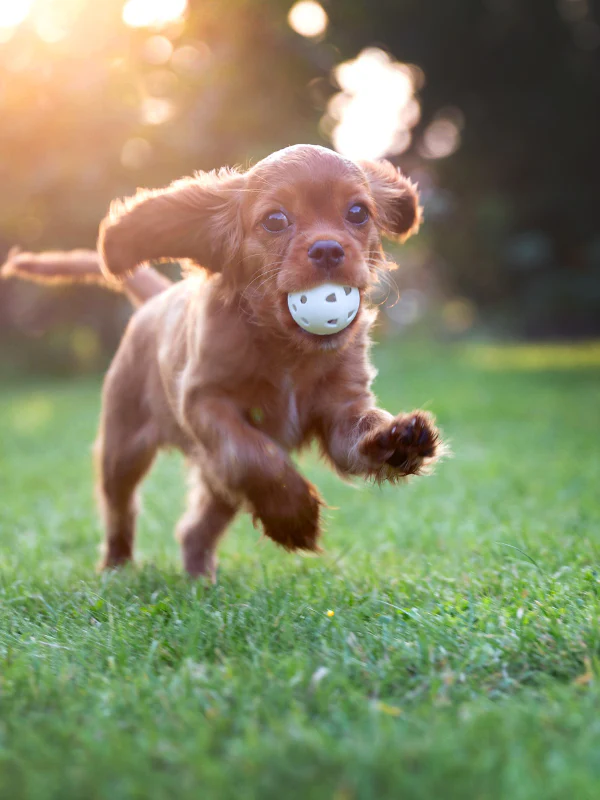As a new dog parent, you might be wondering how much exercise your puppy really needs. Exercise is essential for their physical and mental growth, but it's just as important to avoid overdoing it. In this guide, we’ll explore the right balance of activity for puppies and help you understand when enough is enough. Bringing a puppy into your home is a joyful experience filled with energy and excitement. However, it’s crucial to provide them with the right amount of exercise to support their healthy development. Puppies have different needs than adult dogs, and understanding these can make a big difference in their behavior and well-being. Regular exercise helps build strong muscles and bones, supports weight management, and keeps your puppy active and alert. It also helps burn off excess energy, which can prevent destructive behaviors like chewing or excessive barking. Puppies go through several key developmental stages, each with its own exercise requirements. From the neonatal period to adolescence, their needs change rapidly. Knowing what to expect at each stage can help you tailor their activities accordingly. Several factors determine how much exercise your puppy should get, including breed, age, health, and overall energy level. Some breeds are more active than others, and puppies with medical conditions may need special attention. A common rule of thumb is 5 minutes of exercise per month of age, twice a day. For example, a 3-month-old puppy could benefit from 15 minutes of activity twice daily. However, always watch for signs that your pup might be tired or overworked. Low-impact exercises like short walks, playtime with toys, and gentle training sessions are ideal for young pups. Avoid high-intensity activities like running or jumping until they're older and more developed. Exercise isn’t just about physical activity—it’s also about keeping your puppy’s mind engaged. Puzzle toys, scent games, and obedience training can all help stimulate their brain and keep them entertained. If your puppy shows signs like heavy panting, reluctance to move, or soreness, they might be getting too much exercise. It’s important to give them time to rest and recover. Overexercising can lead to joint problems, fatigue, and even long-term developmental issues. Always listen to your puppy’s body and adjust their routine as needed. As your puppy matures, their energy levels will increase, and so will their need for more structured activity. Gradually introduce longer walks or more complex games to match their growing abilities. Some breeds require more exercise than others. High-energy dogs like Border Collies or German Shepherds may need more activity, while smaller or less active breeds may thrive with shorter sessions. While exercise is important, rest is just as vital. Puppies need plenty of sleep to grow properly. Make sure to include downtime in their daily routine to avoid overstimulation. Always ensure your puppy has a safe environment for exercise. Keep your yard secure, use appropriate gear, and avoid extreme weather conditions that could harm your pup. Exercise is a great way to bond with your puppy and reinforce good behavior. Use positive reinforcement during playtime to teach commands and encourage obedience. If you're unsure about your puppy’s exercise needs, consult your veterinarian. They can offer personalized recommendations based on your pup’s health and development. Finding the right balance of exercise and rest is essential for your puppy’s long-term health and happiness. By understanding their needs, staying attentive to their behavior, and adapting their routine as they grow, you'll set them up for a lifetime of wellness and joy. How much exercise does a 4-month-old puppy need? A 4-month-old puppy should have around 20 minutes of activity twice a day, but always monitor their energy levels and adjust accordingly. Can I take my puppy for a run? Running is not recommended for young puppies due to the risk of joint damage. Stick to short walks and gentle play instead. What are some mental stimulation ideas? Puzzle toys, treat-dispensing games, and obedience training are excellent ways to keep your puppy mentally engaged. How do I know if my puppy is getting enough exercise? A well-exercised puppy should be calm, content, and show no signs of hyperactivity or restlessness indoors. Should I wait after meals before exercising? Yes, it's best to wait at least an hour after eating to avoid digestive discomfort. Plastic Dish Rack With Cup Holder Plastic Dish Rack With Cup Holder,Dish Drainer Rack,Dish Drainer Tray,Cutlery Drainer Jiangmen Jianghai Jianshang Houseware Co.,LTD. , https://www.jm-jianshang.com
Introduction
The Importance of Exercise
Understanding Growth Stages
Factors That Influence Exercise Needs
General Exercise Guidelines
Types of Activities for Puppies
Mental Stimulation Is Key
Signs of Overexercising
Risks of Too Much Activity
Adjusting Exercise as They Grow
Breed-Specific Tips
Balance Is Essential
Creating a Safe Space
Training Through Play
When to Seek Professional Advice
FAQs